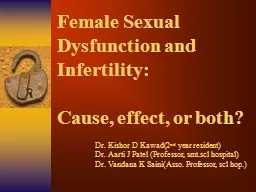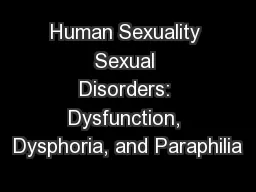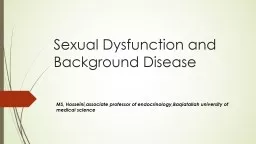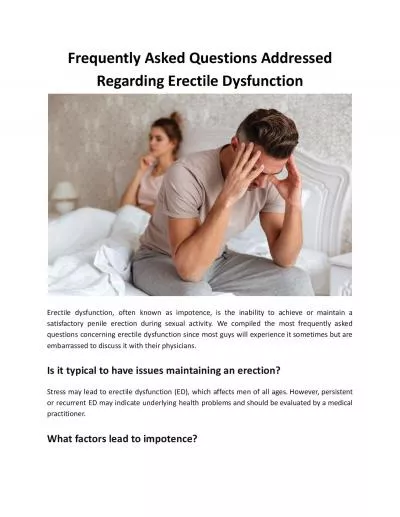PPT-Sexual Dysfunction What Is a Sexual Problem?
Author : delilah | Published Date : 2022-06-11
How Common Are Sexual Problems Evaluating a Sexual Problem A ThreeDimensional Model Duration Primary or Secondary Context Global or Situational Frequency Partial
Presentation Embed Code
Download Presentation
Download Presentation The PPT/PDF document "Sexual Dysfunction What Is a Sexual Prob..." is the property of its rightful owner. Permission is granted to download and print the materials on this website for personal, non-commercial use only, and to display it on your personal computer provided you do not modify the materials and that you retain all copyright notices contained in the materials. By downloading content from our website, you accept the terms of this agreement.
Sexual Dysfunction What Is a Sexual Problem?: Transcript
Download Rules Of Document
"Sexual Dysfunction What Is a Sexual Problem?"The content belongs to its owner. You may download and print it for personal use, without modification, and keep all copyright notices. By downloading, you agree to these terms.
Related Documents














